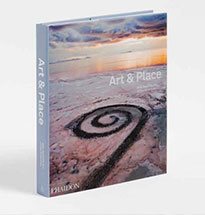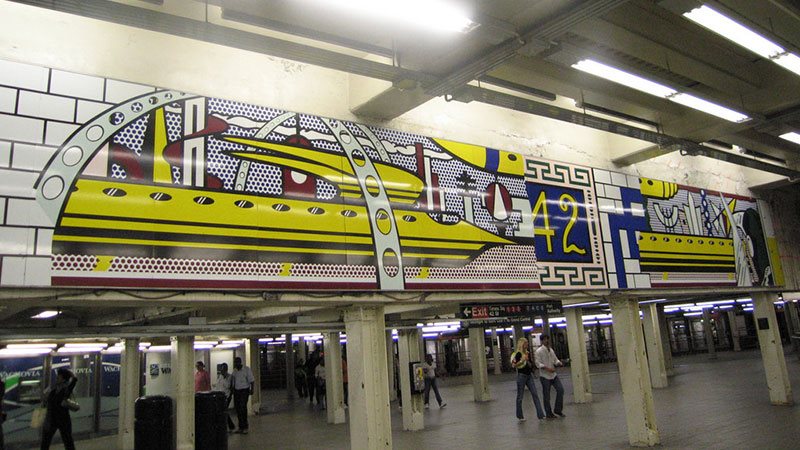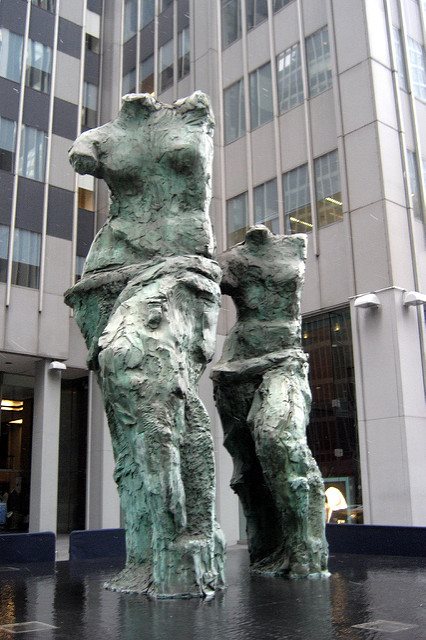BROOKLYN
245 Clinton Ave., Brooklyn, NY 11205
Main: 718.940.5300
Admissions: 718.940.5800
Fax: 718.940.5680
LONG ISLAND
155 W. Roe Blvd., Patchogue, NY 11772
Main: 631.687.5100
Admissions: 631.687.4500
Fax: 631.687.4539
March 23, 2016
 By Melissa Kuehnle
By Melissa Kuehnle
Art is all around us.
This is especially true in New York City where there are sculptures, paintings, mosaics and other in situ pieces that thousands of people hustle by every day, but do not stop to fully appreciate. For certain pieces, the blending in of the piece is part of its artistic intent.
On March 10, Susan Van Scoy, Ph.D., hosted a liberal arts colloquium at SJC Long Island entitled “Art and Place: Site Specific Art in New York City,” for students, staff and faculty. The influence for her presentation was the book, Art & Place: Site-Specific Art of the Americas, where her descriptions are published for three separate pieces of site-specific art. During the colloquium, she described pieces in New York City that were conceived or created for specific sites or environments. In certain instances, the artwork is intertwined with the location, and in others, the art completely contrasts with its environment.
“Group of Four Trees” or “Groupe de Quatres Arbres” by Jean Dubuffet is one of the pieces that starkly conflicts with the gridded building behind it. The form is a black and white, rounded sculpture in a childlike design resembling blank coloring book pages that grew into a real form. The artist believed that “Group of Four Trees” was more of a drawing than a sculpture. It is located at One Chase Manhattan Plaza.

Photo Credit: David Pirmann, Times Square Mural
Another contrasting piece is “Looking Toward the Avenue” by Jim Dine, which includes three Venus de Milo statues in reflecting pools. Dr. Van Scoy described how the curvy female silhouettes contrast with the surrounding buildings’ blunt angles. Two statues stand together and the other stands on its own. The location of these sculptures is at 1301 Avenue of the Americas.
Dr. Van Scoy also pointed out site-specific art that beautify their locations. One of these pieces is the “Times Square Mural” by Roy Lichtenstein. In a comic-book style, the mural depicts the past, present and future of the New York City subway system. From tiled arches to metal beams to a futuristic spaceship, this piece honors the popularity of the location and the artist. The mural is located in the Times Square - 42nd Street Subway Station.
Another two pieces that reflect the beauty of their site are “The Triumph of Music” and “The Sources of Music,” two huge, colorful murals created by Marc Chagall that hang in Lincoln Center. “The Triumph of Music” depicts ballerinas, musicians and a skyline, and “The Sources of Music” includes animals, the George Washington Bridge and characters from operas. Dr. Van Scoy displayed the richness in color and rhythm of these two red, yellow and orange paintings. She explained that they are considered New York treasures and were meant to reflect performances and complement the flow of Lincoln Center patrons.
There is also art that is meant to blend in with its surroundings, as if to not even exist at all. “Times Square” by Max Newhaus is a sound installation that many don’t even know they’ve experienced. Without the small metal plaque next to the work, people would be unaware that the electronic sounds coming from the grate below are deliberate. Dr. Van Scoy described the sound as a combination between church bells and an alien spaceship. This sound installation can be experienced at Broadway between 45th and 46th Streets.

Photo Credit: Wally Gobetz, Looking Toward the Avenue
Site-specific art can become tourist destinations. This is true for “The New York Earth Room” by Walter de Maria. “The New York Earth Room” is a permanent installation of a glaring white room in SoHo filled with dark brown dirt. Visitors get buzzed into the building and when they reach the room, they can smell the earth and see its massive spread. Dr. Van Scoy described a visit to “The New York Earth Room” as a peaceful respite from the loud, concrete jungle that is New York City. The installation was at first considered art, but it is now a place with free admission that some consider the only unbothered earth on the east coast.
“Shadows and Flags” by Louise Nevelson sits on a plaza named after the artist. When former Mayor Ed Koch decided to commemorate the plaza in 1978, it was the first to be named after an artist and one of the first to honor a woman. The artist created this work of seven black steel forms and also incorporated trees and benches around the plaza to create an entire space. Dr. Van Scoy explained that the Louise Nevelson Plaza underwent renovations in 2008 in the amount of $2 million after debris from 9/11 coated the structures. It returned to the exact place where it was constructed in 2010 and is a current stop on many walking tours of New York City.
Site-specific art wasn’t always welcomed by viewers and in the case of “Tilted Arc” by Richard Serra, the large metal arc was torn down after it attracted graffiti, rusted and was deemed unsafe. It stood for eight years in Foley Federal Plaza. Dr. Van Scoy said that the remnants of the structure are rumored to presently live in a junkyard.
Fortunately, all these works of art were or are not protected by the price of admission and anyone can walk right up and appreciate their shape, movement and significance.
"These site-specific pieces allow for contemplative moments in a bustling metropolis,” said Dr. Van Scoy. “So, the next time you are exploring Manhattan, take a look up, down, across and listen—you may be part of a site-specific art work.”
Get Social
Get Social